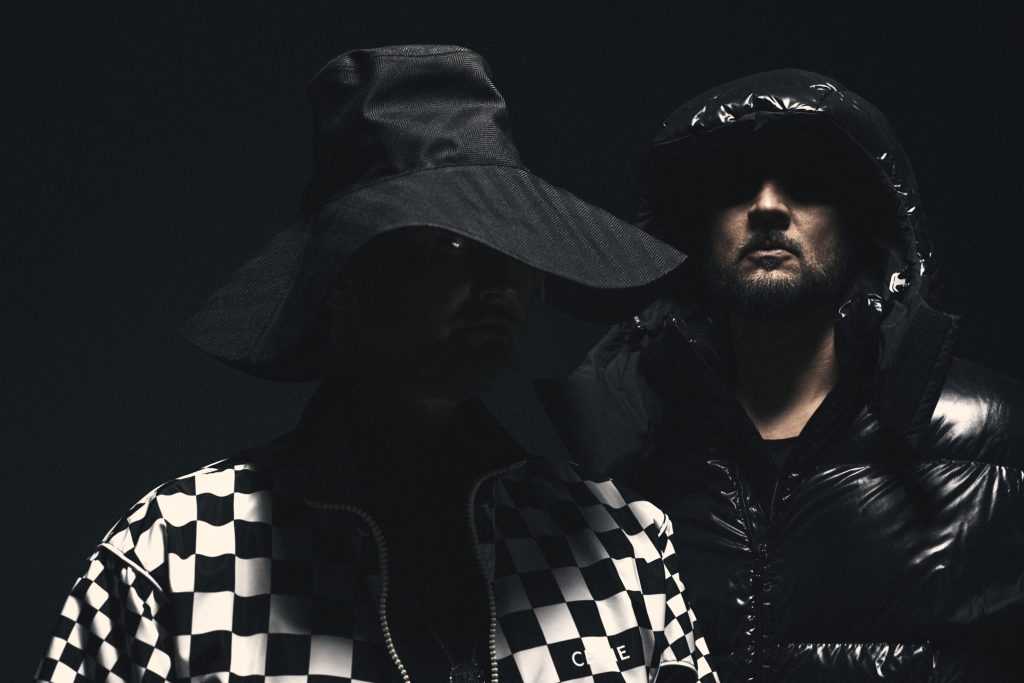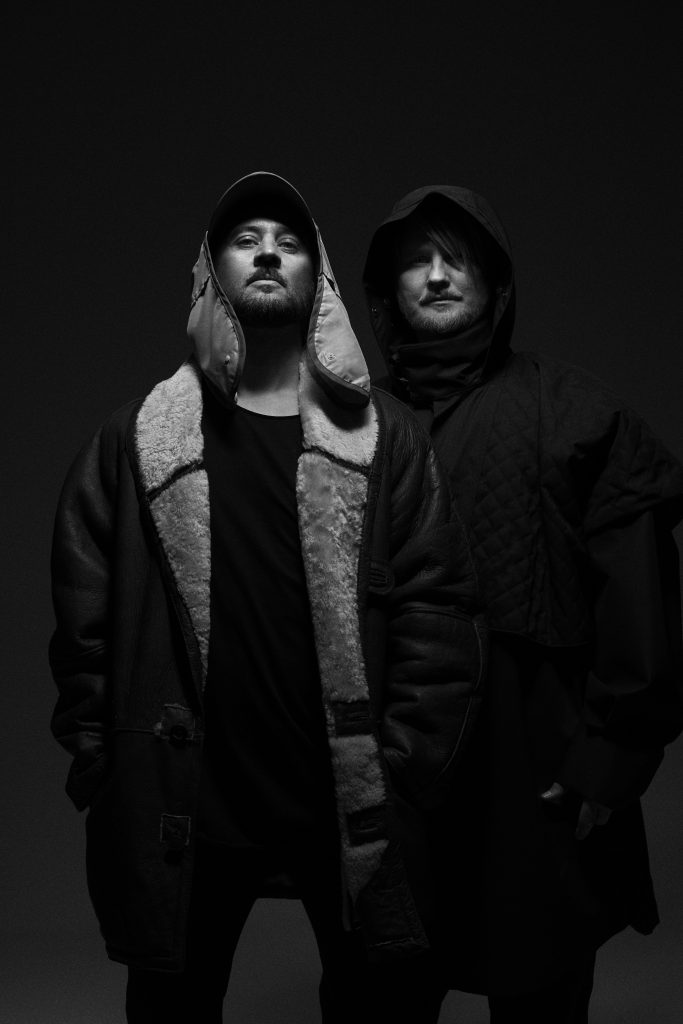Röyksopp On Their Most Ambitious Project Yet, “Profound Mysteries II”
The prolific electronic music duo on their upcoming album and the importance of imagination

Wherever Norwegian electronic music duo Röyksopp goes, curiosity often follows. Since releasing their debut breakout album Melody A.M. in 2001 (which received critical acclaim for its unique amalgam of downtempo, ambient and synth-pop sounds), the duo consisting of Svein Berge and Torbjørn Brundtland has continued to evolve and iterate throughout the four studio albums that followed—that is until their fifth album, The Inevitable End, acted as a cryptic farewell to releasing LPs. If that didn’t leave people wondering what Röyksopp would be up to next, Profound Mysteries, their surprise return eight years later, certainly did. The intrigue continues on 19 August when the duo release that album’s sequel, Profound Mysteries II, a project that sees them embracing the unknown more than ever.
The pair describes the new conceptual album as their most ambitious project yet, and sonically, this is clear. The album shape-shifts through varying tones, textures and temporalities, meditating on themes of love and loss as well as despair and reconciliation. Through it all, the album feels (and sounds) like Röyksopp, which is to say it is suffused with intuitive collaborations that often characterized their work (their collaborative work with Robyn, including Do It Again, being case in point). Vocals from Astrid S, Allison Goldfrapp, Susanne Sundfør and more feature on the project that also comprises visuals and “artefacts” by Australian artist Jonathan Zawada which accompany each track—as well as a short film made in collaboration with Scandinavian production agency Bacon.
With its abundant allusions to inspiring icons (including Fleetwood Mac, Depeche Mode, Kraftwerk and more), the album channels the duo’s inquisitive bones. We spoke with Berge and Brundtland about the importance of pondering, crafting new listening experiences and how the album looks to their past and future.

Profound Mysteries was a sort of re-emergence for Röyksopp. How does part two pick up from where part one left off?
Svein Berge: It’s clearly the most ambitious thing that Torbjørn and I have ever been done in terms of music. Also, in sheer mass—like the volume of it. I think it’s possibly the one with the strongest conceptual ideas and possibly the most focused thing we have done as well. The first part we tend to call more of an introspective, perhaps secretive thing and in comparison, the second part is more open. It has a stronger presence, it’s more inviting, more striking, more, perhaps, immediate. It has a very clear narrative in our mind—the way we present the music to the world and how it’s been constructed on the album.
Personally, I imagine sitting in a dimly lit room with headphones on enjoying part one, whereas the second one you might enjoy in the company of others, possibly on a loud speaker.

Part two is also suffused with tributes to the artists that played a role in shaping your taste and identities. Was it difficult to strike a balance between creating thoughtful nods versus being too similar?
SB: It’s all about balance and how to play it. I’m not too keen on the term esoteric but it’s kind of what it is. You need it to be just so much that those in the know get it but, at the same time, you want people who don’t necessarily get the reference to appreciate it. The most dangerous part is if it becomes a pastiche or a bleak copy of something that’s already been made. When we do those references, we try to make it so that the listener understands that this is praise; it’s not us trying to siphon off on whatever somebody did before us. Also, we don’t make just one reference. When we make a reference to the German band Kraftwerk, we make sure to put other things into that track so it doesn’t become only Kraftwerk—it becomes something else.
Torbjørn Brundtland: As you say Sven, we don’t know if we succeed in this, but we feel confident in a sense because we know where it comes from—it comes from our hearts. It’s not something that we thought, “Oh it will be very lucrative for us to emulate this style.” It just comes natural to us.
Given that it’s a sequel, was approaching this album different from others?
SB: Both albums have been made simultaneously. We make a track designated to the part where it belongs so the creative process has been ongoing.
The way we tend to work is that we use a mind map. We usually have a big cardboard sort of canvas on one of the walls, and we just jot down ideas and thoughts. It’s all very abstract and reference-heavy when we have that language. It’s obviously something Torbjørn and I have developed over the years because we’ve known each other since we were kids.
So we put up a sort of a framework: how can we best convey those feeling, that sentiment, that emotion? How can we communicate that in music and what kind of instruments should we use? It’s an organic process; it’s a bit trial and error. We appreciate that. One of the things that makes me very happy is to learn by mistakes.

From using field recordings to the album’s themes of exploration, you often weave experimentation into your work. How does experimentation motivate you?
TB: Experimentation in music obviously evokes different feelings in people, and for me it’s strange… Experimentation is not necessarily breaking certain norms, it is more of a search for something that has value to you, and in that respect I think we are doing our fair share of experimentation.
SB: We are fairly inquisitive and have always been. We like to to ponder. I guess that’s one of the pastimes that we have when we don’t make music; we just ramble. We sit and ramble on the smaller things and the big things, and I think that translates into what we do musically. We don’t want to stagnate in any way and repeat ourselves. You have to be inquisitive. Now, obviously, when you say “experiment,” most people tend to think you have to go all the way left field and make noise music, but experimenting to us can be on a very small scale.
Profound Mysteries II features so many intuitive collaborations. How did you approach them so that they sound like natural extensions of your work?
TB: It’s very much about making other artists and their universe—not only their singing voice in a physical sense but their whole persona—merge with our universe and that’s what we’re trying to do with these collaborations.
The whole idea of Röyksopp is to have a visual expression
What about the visual elements? How do you view them in relation to music?
TB: It’s always gone hand in hand. The whole idea of Röyksopp is to have a visual expression. In the past we’ve made music videos, but they weren’t made for all the tracks. This time we wanted to do it differently. The visualizers are made by Johnathan Zawada. We obviously liked his work and had many interesting talks with him. The end result is that you have something in front of you that you don’t really know what it is. Your mind is trying to find patterns and recognize it. In a sense, that can represent a mystery in Profound Mysteries.
SB: The main idea with Profound Mysteries is obviously linked to imagination and the subjectivity of experiencing artful expression. One of the downsides we found over the years is the fact that when you have music videos it becomes the track—that’s what it’s about. It’s about that girl and the boy in the movie and you remember that thing with the helicopter and the car crash. There are like two lines under it: This is the answer, this is what the song is. I personally have gone off that idea of being so specific.

Have your ideas on LPs and the music-listening experience changed or developed since declaring farewell to traditional album formats with The Inevitable End?
TB: We obviously love the idea of albums and we grew up with them and that’s kind of the musical expression that’s dearest to our hearts, those great albums that you fell in love with at a different time, a different attention span. It was normal to put on an album and do very little other than listen to the whole thing. I’m not sure I can do that today.
SB: Can anyone? I’m just wondering.
TB: I think maybe psychopaths. [laughs] Really, we tied this together with the ongoing project because we come from a place where we love albums but we realize it is too much. So we decided to make a lot and make Profound Mysteries which is even more than an album. But the way that we’ve released it is obviously track by track. So the whole album is sort of flowing out and at the end, for those interested, you have the chance to listen to the whole experience.
Hero image by Stian Andersen, courtesy of Röyksopp












